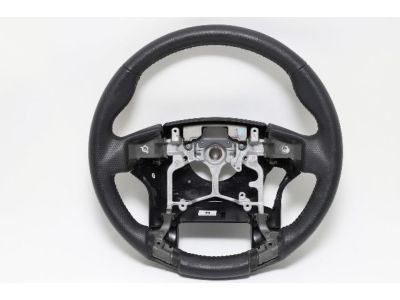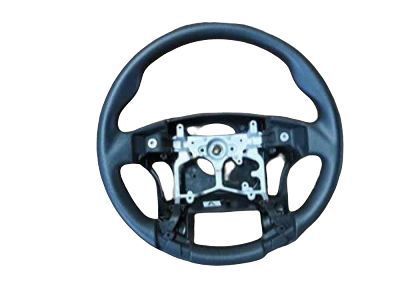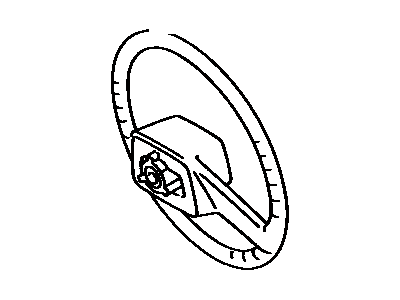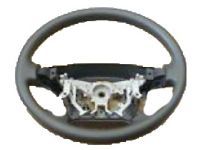×
- Live Chat
- 1-888-905-9199


My Garage
My Account
Cart
Genuine Toyota 4Runner Steering Wheel
Navigation Steering Wheel- Select Vehicle by Model
- Select Vehicle by VIN
Select Vehicle by Model
orMake
Model
Year
Select Vehicle by VIN
For the most accurate results, select vehicle by your VIN (Vehicle Identification Number).
84 Steering Wheels found
Toyota 4Runner Wheel Assembly, Steering
Part Number: 45100-35540-C0$570.41 MSRP: $839.64You Save: $269.23 (33%)Ships in 1-3 Business DaysToyota 4Runner Wheel Assembly, Steering
Part Number: 45100-60670-C0$252.52 MSRP: $362.10You Save: $109.58 (31%)Ships in 1-3 Business DaysToyota 4Runner WHEEL ASSY, STEERING
Part Number: 45100-35520-C0$761.16 MSRP: $1120.42You Save: $359.26 (33%)Ships in 1-2 Business DaysToyota 4Runner Wheel Assembly, Steering
Part Number: 45100-35281-J0$319.26 MSRP: $457.79You Save: $138.53 (31%)Ships in 1-3 Business DaysToyota 4Runner Wheel Assembly, Steering
Part Number: 45100-58010-B0$279.55 MSRP: $400.85You Save: $121.30 (31%)Ships in 1-3 Business DaysToyota 4Runner Wheel Assembly, Steering
Part Number: 45100-35281-02$316.01 MSRP: $453.14You Save: $137.13 (31%)Ships in 1-3 Business DaysToyota 4Runner Wheel Assembly, Steering
Part Number: 45100-35270-B0$199.14 MSRP: $285.54You Save: $86.40 (31%)Ships in 1-3 Business DaysToyota 4Runner Wheel Assembly, Steering
Part Number: 45100-35340-J0$204.54 MSRP: $293.30You Save: $88.76 (31%)Ships in 1-3 Business DaysToyota 4Runner Wheel Assembly, Steering
Part Number: 45100-35290-02$424.86 MSRP: $625.39You Save: $200.53 (33%)Ships in 1-3 Business DaysToyota 4Runner Wheel Assembly, Steering
Part Number: 45100-0W210-B0$705.39 MSRP: $1038.33You Save: $332.94 (33%)Ships in 1-3 Business DaysToyota 4Runner Wheel Sub-Assy, Steering
Part Number: 45100-14350-02$287.88 MSRP: $412.80You Save: $124.92 (31%)Ships in 1-3 Business DaysToyota 4Runner Wheel Assembly, Steering
Part Number: 45100-35280-02$319.26 MSRP: $457.79You Save: $138.53 (31%)Ships in 1-3 Business DaysToyota 4Runner Wheel Assembly, Steering
Part Number: 45100-35280-J0$319.26 MSRP: $457.79You Save: $138.53 (31%)Ships in 1-3 Business DaysToyota 4Runner Wheel Assembly, Steering
Part Number: 45100-35270-J0$199.14 MSRP: $285.54You Save: $86.40 (31%)Ships in 1-3 Business DaysToyota 4Runner Wheel Assembly, Steering
Part Number: 45100-35290-03$381.36 MSRP: $561.37You Save: $180.01 (33%)Ships in 1-3 Business DaysToyota 4Runner Wheel Assembly, Steering
Part Number: 45100-35320-06$381.36 MSRP: $561.37You Save: $180.01 (33%)Ships in 1-3 Business DaysToyota 4Runner Wheel Assembly, Steering
Part Number: 45100-35320-E1$381.36 MSRP: $561.37You Save: $180.01 (33%)Ships in 1-3 Business DaysToyota 4Runner Wheel Assembly, Steering
Part Number: 45100-35290-04$424.86 MSRP: $625.39You Save: $200.53 (33%)Ships in 1-3 Business DaysToyota 4Runner Wheel Assembly, Steering
Part Number: 45100-35281-B0$319.26 MSRP: $457.79You Save: $138.53 (31%)
| Page 1 of 5 |Next >
1-20 of 84 Results
Toyota 4Runner Steering Wheel
If you are in demand for superior quality and affordable OEM Toyota 4Runner Steering Wheel, then shop with us! We own a wide range of the reduced-priced genuine Toyota 4Runner Steering Wheel. You can purchase in confidence as all parts come with a manufacturer's warranty. Any issues with our products? No need to worry as we have a hassle-free return policy to guide you every step of the way.
Toyota 4Runner Steering Wheel Parts Questions & Experts Answers
- Q: How do you remove and install a steering wheel on 2003 through 2009 Toyota 4Runner?A: Ensure the front wheels are pointed straight ahead, then disconnect the cable from the negative terminal of the battery and wait at least three minutes before proceeding. Pry the screw covers off each side of the steering wheel and loosen the two Torx screws that retain the airbag module; the screws do not need to be completely removed. Each screw has a groove around its head that will catch a ridge around the inside of each hole, allowing the ridge to hold the screw in place when loosened enough to release the airbag module. Lift the airbag module off the steering wheel and disconnect the airbag electrical connectors by releasing the locking tabs first. Unplug any other electrical connectors that would interfere with steering wheel removal. Remove the steering wheel retaining nut and mark the position of the steering wheel to the shaft if marks do not already exist or do not line up. Use a puller to detach the steering wheel from the shaft, ensuring not to screw the puller bolts into the steering wheel hub more than five turns each, and avoid hammering on the shaft. If necessary, re-center the clockspring by verifying that the front wheels are straight, turning the clockspring housing counterclockwise until it becomes hard to turn, then clockwise about 2-1/2 turns to align the marks. The clockspring can be removed from the combination switch if needed by removing four screws and disconnecting the electrical connectors. To install the wheel, align the mark on the steering wheel hub with the mark on the shaft and slide the wheel onto the shaft, then install and tighten the nut to the specified torque. Installation is otherwise the reverse of removal, and after any repairs to the steering components, various sensors for the vehicle stability and traction control system may need calibration, which can be confirmed by a warning light at the instrument cluster. If no warning light is present, the system should be normal, but calibration requires special tools and expertise, and the vehicle can be driven to a dealership service department or qualified repair shop for this if necessary, keeping in mind that the vehicle stability and traction control, ABS, and DAC features may not be operational.
Related Toyota 4Runner Parts
Browse by Year
2024 Steering Wheel 2023 Steering Wheel 2022 Steering Wheel 2021 Steering Wheel 2020 Steering Wheel 2019 Steering Wheel 2018 Steering Wheel 2017 Steering Wheel 2016 Steering Wheel 2015 Steering Wheel 2014 Steering Wheel 2013 Steering Wheel 2012 Steering Wheel 2011 Steering Wheel 2010 Steering Wheel 2009 Steering Wheel 2008 Steering Wheel 2007 Steering Wheel 2006 Steering Wheel 2005 Steering Wheel 2004 Steering Wheel 2003 Steering Wheel 2002 Steering Wheel 2001 Steering Wheel 2000 Steering Wheel 1999 Steering Wheel 1998 Steering Wheel 1997 Steering Wheel 1996 Steering Wheel 1995 Steering Wheel 1994 Steering Wheel 1993 Steering Wheel 1992 Steering Wheel 1991 Steering Wheel 1990 Steering Wheel 1989 Steering Wheel 1988 Steering Wheel 1987 Steering Wheel 1986 Steering Wheel 1985 Steering Wheel 1984 Steering Wheel














